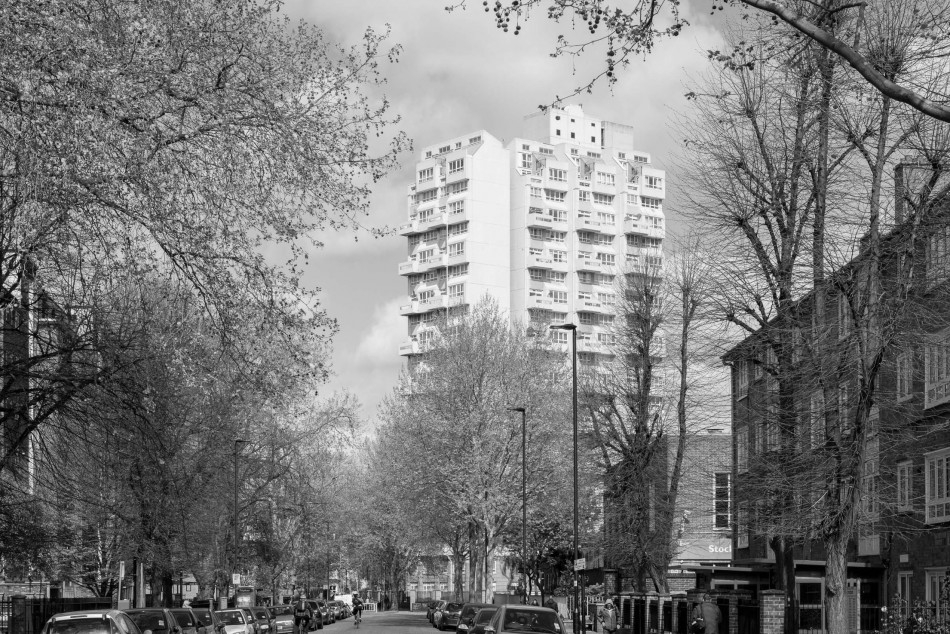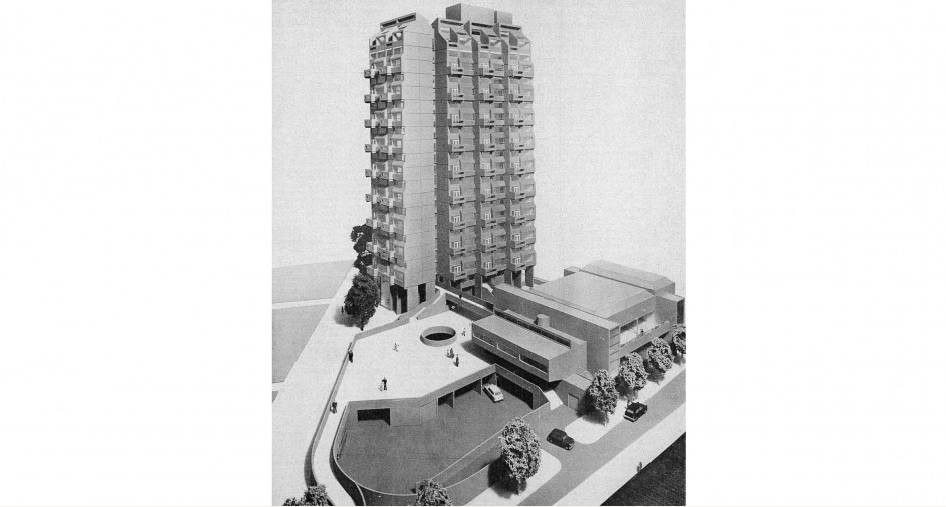George Finch
George Finch (1930-2013) was a prominent British architect, best known for his distinctive post-war social housing projects. Having studied architecture at North London Polytechnic (now London Metropolitan University) and later at the Architectural Association School of Architecture, alongside Neave Brown and Kenneth Frampton, Finch went on to work with the London County Council. A committed socialist, Finch believed architecture had the power to transform the lives of post-war Londoners, an idea which was entrenched in his work with the LCC – remodelling bomb-ruined London, and creating high quality social housing, civic and environmental buildings for everyday people.
In George Finch’s obituary for The Twentieth Century Society, Tom Cordell writes: “Above my desk I have a copy of a sketch by the architect George Finch, who died this February aged 82. Drawn in the mid-sixties, it shows the interior of a flat. On the far side of the floor-to-ceiling windows a passing helicopter shows technology’s potential. On the balcony, nature is represented by some flowers and a bird which is happily resting on the railings. Indoors, it’s a convivial setting; we see a family about to have a meal together, next to a happily messy collection of books on the shelves. Looking the viewer straight in the eye, a smiling man announces: ‘What a lovely view’. The drawing is a vision of the future that also defines the artist. A lifelong socialist, George believed that a love of art, nature, knowledge and above all mankind would create a better world for all.”
Of himself, George Finch said: “I designed for everybody you know – this is the sort of house or flat I would like to live in. Everybody’s important. OK, they may be lower paid, but… all these people are very important to society.”





